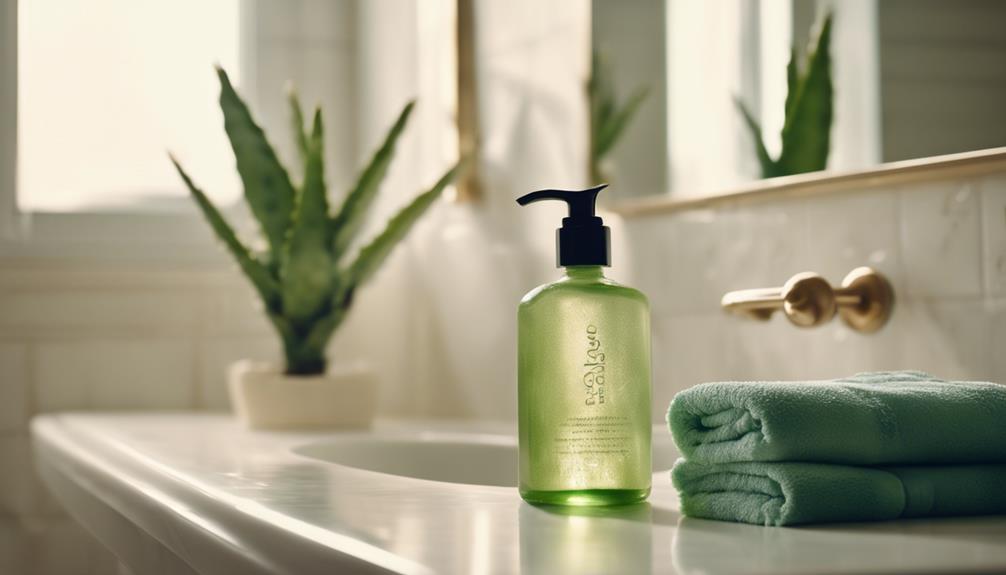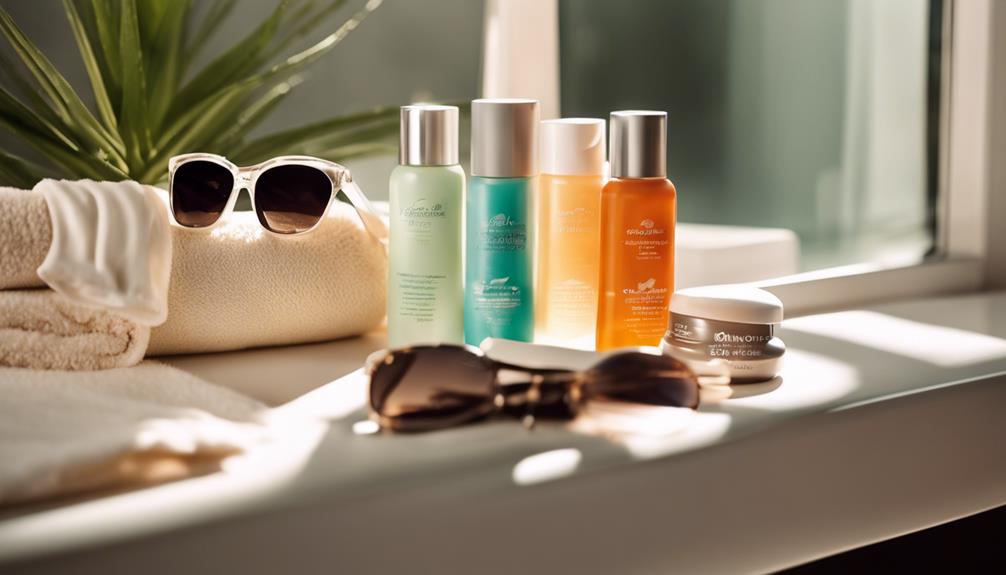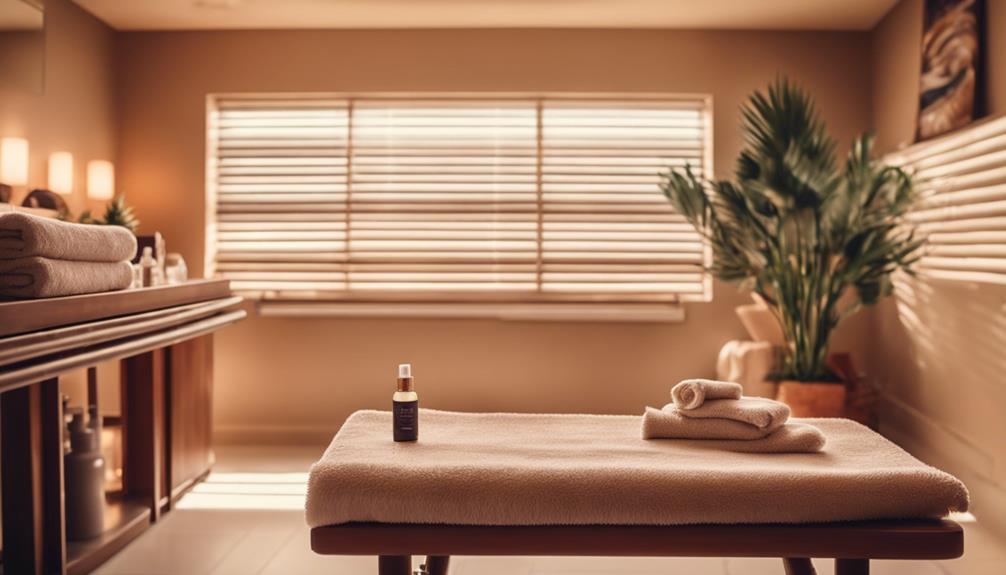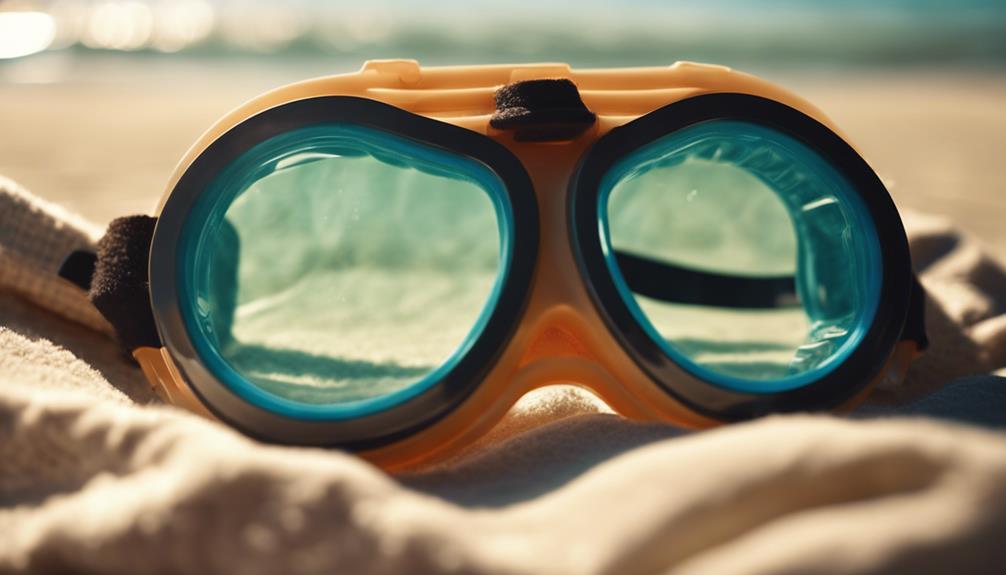To prevent tanning bed burns, start by assessing your skin type, as fair skin is prone to burns while darker skin can handle more UV exposure. Select a hydrating tanning lotion with SPF and apply it again during your tanning session. Begin with brief tanning sessions of 5-10 minutes and gradually increase the time depending on how your skin reacts. Remember to always wear protective goggles and shield sensitive areas. After tanning, moisturize your skin and take cool showers. Additionally, ensure your tanning equipment is kept clean for safety purposes. There are many more tips to discover that can enhance your tanning experience and reduce the risk of burns.
Key Takeaways
- Assess your skin type and start with short tanning sessions to gauge tolerance and avoid burns.
- Choose hydrating tanning lotions with SPF to protect your skin from UV damage.
- Use protective goggles and apply SPF lip balm to shield sensitive areas from harmful rays.
- Maintain proper hygiene by disinfecting the tanning bed and using clean towels or sheets.
Skin Type Assessment
To effectively avoid tanning bed burns, you should always assess your skin type first, as it directly influences how your skin reacts to UV exposure.
If you have fair skin, you're more prone to burning, while medium skin may tan more easily but still requires caution.
Dark skin tends to tolerate UV exposure better, yet it's not immune to damage.
Recognize your skin history, too; any previous burns or reactions should dictate your tanning approach.
Before hitting the tanning bed, prep your skin by exfoliating 24 hours prior, moisturizing daily, and ensuring it's clean and free of heavy products.
This preparation helps your skin respond better to UV rays, reducing the risk of burns and enhancing your tanning experience.
Selecting Tanning Lotions
Choosing the right tanning lotion can greatly enhance your tanning experience while minimizing the risk of burns. To make the best choice, look for lotions that offer:
- Hydrating ingredients like aloe vera or shea butter
- SPF for added UV protection
These elements help keep your skin moisturized, promote an even tan, and protect against potential damage.
Always apply the lotion evenly and reapply as needed during your session to maintain hydration.
Remember, a well-chosen tanning lotion not only boosts your results but also acts as a barrier against UV rays, reducing the chances of burns and promoting healthier skin over time.
Happy tanning!
Session Timing Guidelines

Setting appropriate session times is essential for preventing tanning bed burns and achieving a safe, desired tan.
Start with short sessions—about 5 to 10 minutes—especially if you're new to tanning beds. This helps you gauge your skin's reaction. Gradually increase your session duration by a few minutes each time, but never exceed the maximum limits based on your skin type.
Fair skin typically requires shorter sessions compared to darker skin types. Always use a timer to track your tanning duration accurately, and don't be tempted to stay longer, even if you feel fine.
Consulting with tanning professionals can also provide personalized recommendations tailored to your skin's needs. Remember, patience is key to a beautiful tan without burns.
Protective Gear Recommendations
Wearing the right protective gear is essential for ensuring your safety and comfort during tanning bed sessions. It not only helps prevent burns but also enhances your overall tanning experience.
Here are a few must-have items to take into account:
- Protective Goggles: They shield your eyes from harmful UV rays.
- SPF Lip Balm: It keeps your lips moisturized and protected from sun damage.
Additionally, think about wearing light, protective clothing for extra coverage.
Make sure all your gear is clean and appropriate for tanning use.
Post-Tanning Skin Care

After guaranteeing your skin's protection during the tanning session, it's important to focus on post-tanning skin care to maintain its health and enhance your tan.
Start by hydrating your skin with a light moisturizer to lock in moisture without clogging your pores.
Cool showers can soothe any irritation, while aloe vera gel offers anti-inflammatory benefits.
Drink plenty of water to keep your skin hydrated from the inside out.
If you notice any peeling, treat it gently with a mild exfoliator to maintain an even tan.
Avoid harsh products that could irritate your skin further.
Tanning Bed Hygiene Practices
Maintaining proper hygiene in tanning beds is essential for preventing skin infections and ensuring a safe tanning experience. You should always prioritize cleanliness before using a tanning bed.
Here are some key practices to follow:
- Wipe down the bed: Use disinfectant wipes to clean the surface before and after your session.
- Cover the bed: Use a towel or disposable sheet to create a barrier between your skin and the bed.
Recommended Products and Accessories

To enhance your tanning experience while ensuring safety, having the right products and accessories on hand is key. Here's a quick guide to must-have items:
| Product/Accessory | Purpose |
|---|---|
| Tanning Bed Goggles | Protects your eyes from harmful UV rays |
| Moisturizing Tanning Lotion | Hydrates skin and improves tanning results |
| SPF Lip Balm | Shields lips from UV damage |
Invest in quality products that suit your skin type. Don't forget to maintain hygiene by using cleaning wipes for the tanning bed. Remember, the right tools not only enhance your tan but also minimize the risk of burns, ensuring a safe and enjoyable tanning experience.
What are the best ways to avoid tanning bed burns?
To avoid tanning bed burns, follow these tanning bed success tips: Always use protective eyewear, limit your time in the bed, apply a high-quality sunscreen, and moisturize your skin before and after tanning. Additionally, regularly clean the bed and replace the bulbs to ensure a safe and effective tanning experience.
Conclusion
By taking the time to prepare and care for your skin, you can enjoy a safe tanning experience and achieve that sun-kissed glow you desire.
Remember, 'an ounce of prevention is worth a pound of cure.' Always assess your skin type, choose quality products, and never rush your sessions.
With the right precautions and aftercare, you'll keep your skin healthy while flaunting a gorgeous tan that lasts.
So, go ahead and bask in the glow!










